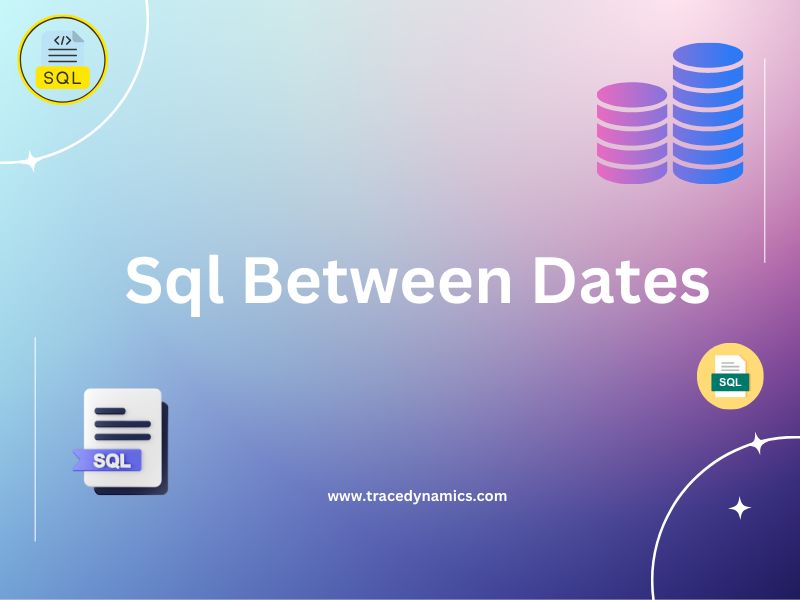Sql Between Dates: The ability to query data within a specific date range is crucial in database management. It helps in narrowing down the data for analysis, reporting, or any other operations necessary for business processes. SQL provides an efficient way to filter data between dates using the BETWEEN operator. This article will delve into the application of the SQL BETWEEN operator in handling date ranges, its syntax, and various examples to illustrate its utility.
- Key Takeaways
- Understanding the syntax and application of SQL BETWEEN operator.
- Practical examples to retrieve data between dates.
- Common use cases for querying date ranges in SQL.
- Optimizing your queries for better performance.
Introduction to SQL BETWEEN Operator
SQL is a powerful language used in managing relational databases. One of its strong suits is the ability to filter data using various operators, among them the BETWEEN operator. This operator is used to filter the data within a specified range, which can be numbers, text, or dates.
- Relevance of Date Range Queries
- Historical data analysis
- Real-time reporting
- Data auditing
Syntax and Usage of BETWEEN Operator
The basic syntax of the BETWEEN operator is as follows:
expression BETWEEN low AND high;
Examples of BETWEEN Operator with Dates
SELECT * FROM Orders WHERE OrderDate BETWEEN '2022-01-01' AND '2022-12-31';
This query will retrieve all orders placed within the year 2022.
Common Use Cases for Date Range Queries
Being able to query data within a specific date range is crucial in various scenarios such as:
- Financial reporting
- Inventory management
- User activity tracking
Optimizing Date Range Queries
It’s important to ensure your queries are optimized to run efficiently. Some tips include:
- Indexing the date column
- Avoiding functions on the date column in the WHERE clause
Practical Examples and Scenarios
Let’s look at some practical examples and scenarios where querying date ranges in SQL is necessary.
- Example 1: Financial Reporting
- Quarterly financial reports
- Yearly tax calculations
- Example 2: User Activity Tracking
- Monitoring user logins
- Analyzing user activity trends
Incorporating BETWEEN Operator in Different SQL Databases
Different SQL databases may have slight variations in how they handle date range queries.
- MySQL and Date Range Queries
- Using the DATE_FORMAT function for better control over date formats.
- SQL Server and Date Range Queries
- Utilizing the CAST and CONVERT functions for date manipulation.
Handling Different Date Formats
SQL is flexible in handling different date formats which is crucial for working with diverse databases. The standard date format is ‘YYYY-MM-DD’, but variations exist and may require conversions for accurate querying.
Converting Date Formats
SQL provides functions like CONVERT() and CAST() to change date formats. These functions are handy when dealing with date strings or different date format standards.
-- Example using CONVERT()
SELECT CONVERT(VARCHAR, GETDATE(), 101); --Converts current date to MM/DD/YYYY format
Dealing with NULL or Missing Dates
In a real-world database, it’s common to encounter missing or NULL date values which can affect the accuracy and performance of your date range queries.
Strategies to Handle NULL Dates
- Utilizing the
COALESCE()function to replace NULLs with a specified value. - Implementing data validation checks to prevent NULL date entries.
Performance Optimization Strategies
Optimizing the performance of your date range queries is crucial to ensure they execute efficiently and return the expected results promptly.
Indexing Date Columns
Creating indexes on date columns can significantly enhance the query performance.
Avoiding Full Table Scans
Full table scans are performance killers, especially in large databases. Use indexed columns in the WHERE clause to avoid full table scans.
Error Handling in Date Range Queries
Errors are inevitable in SQL queries. Understanding common errors and how to troubleshoot them will ensure your date range queries run smoothly.
Common Errors
- Incorrect date format
- Missing or NULL date values
Utilizing Advanced SQL Features
Advanced SQL features like Common Table Expressions (CTEs) and Window Functions can be employed to enhance your date range querying capabilities.
Common Table Expressions (CTEs) and Date Range Queries
-- Example using CTE
WITH DateRange AS (
SELECT OrderDate FROM Orders
WHERE OrderDate BETWEEN '2022-01-01' AND '2022-12-31'
)
SELECT * FROM DateRange;
Frequently Asked Questions (FAQs)
How can I optimize the performance of date range queries in SQL?
Utilizing indexing, avoiding full table scans, and employing advanced SQL features like CTEs can optimize the performance of date range queries.
What are the common errors encountered in date range queries?
Common errors include incorrect date format and missing or NULL date values. Understanding and addressing these errors is crucial for accurate querying.

